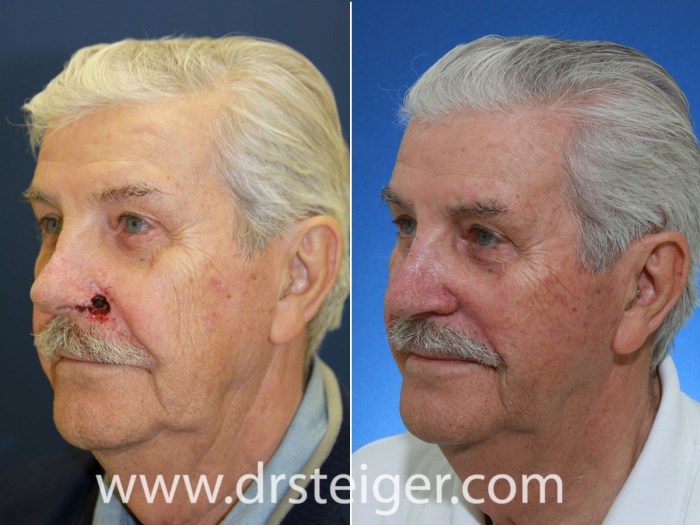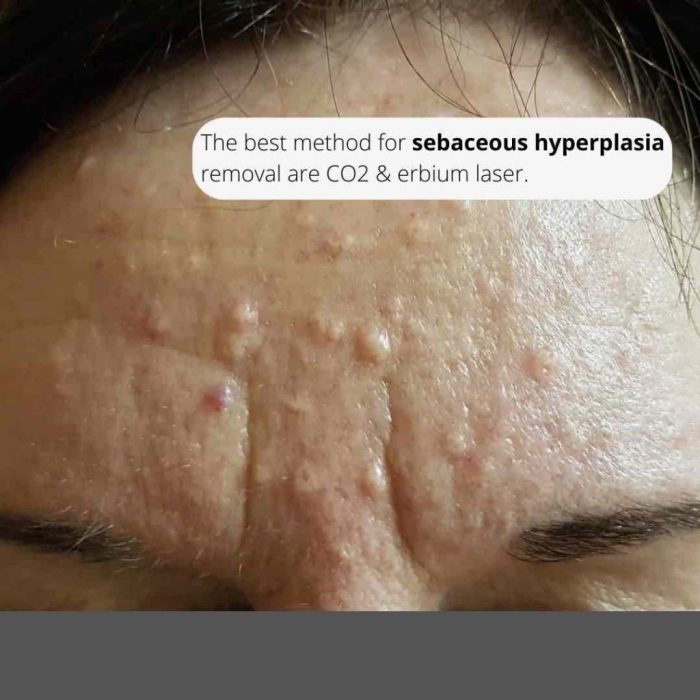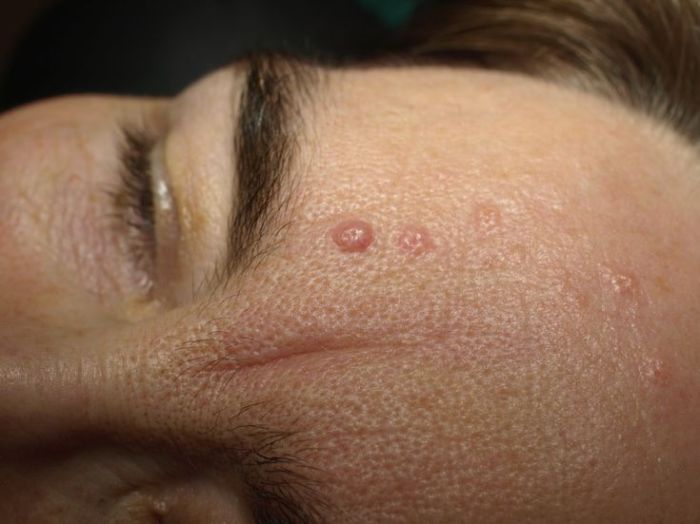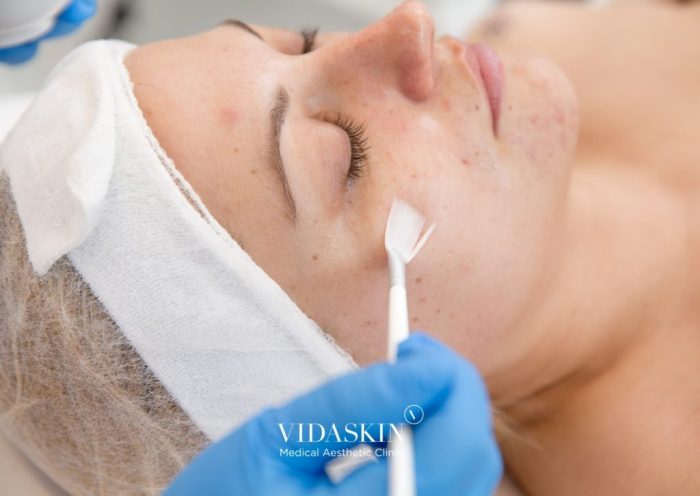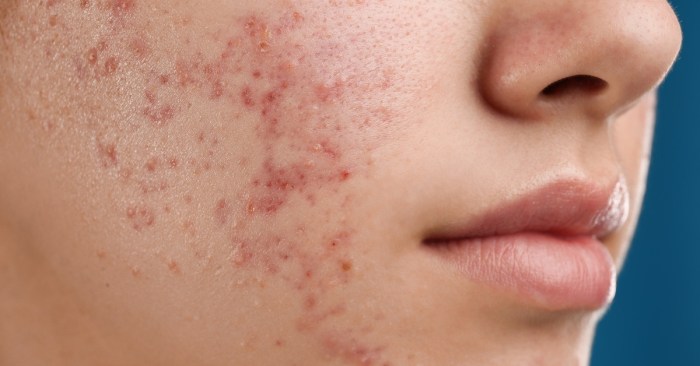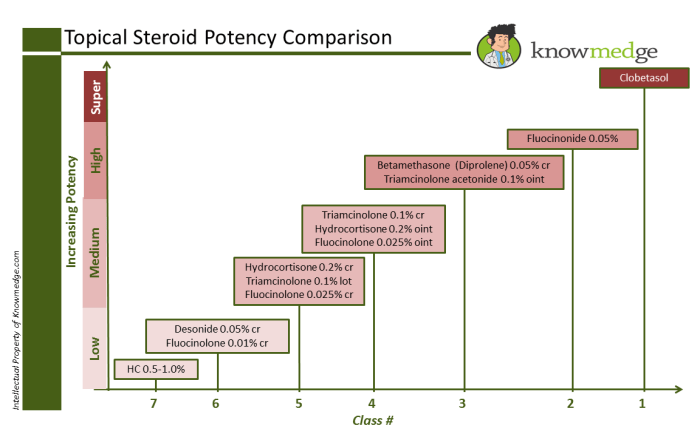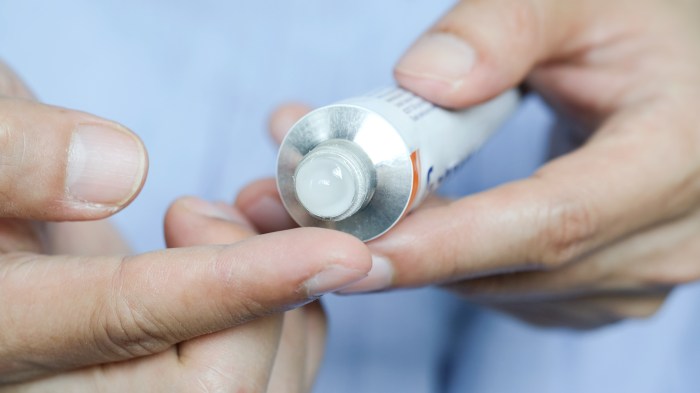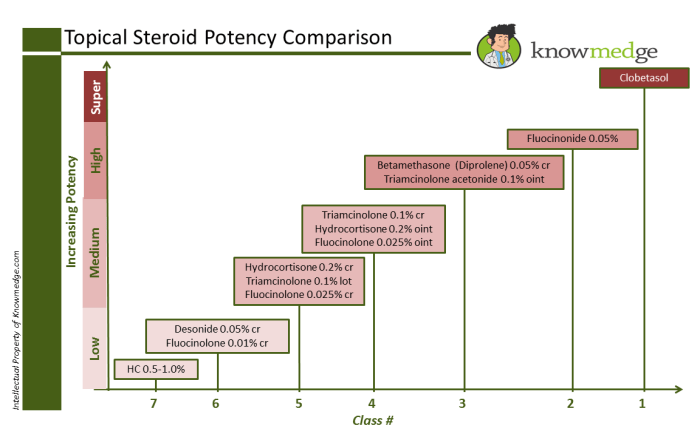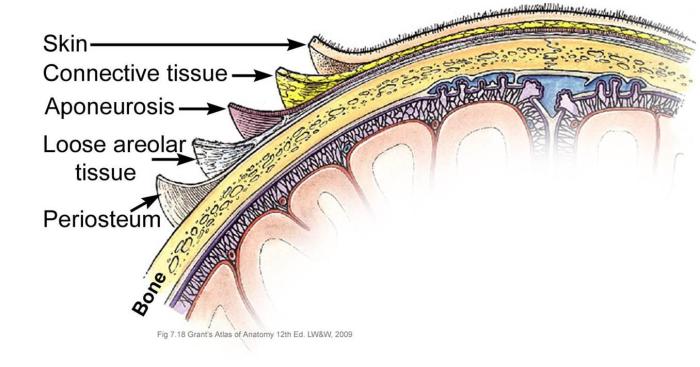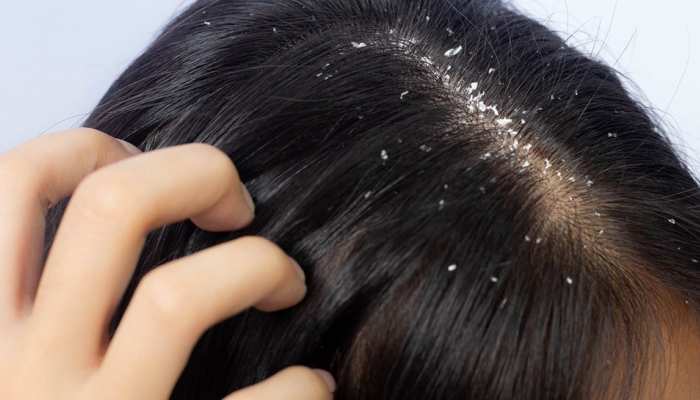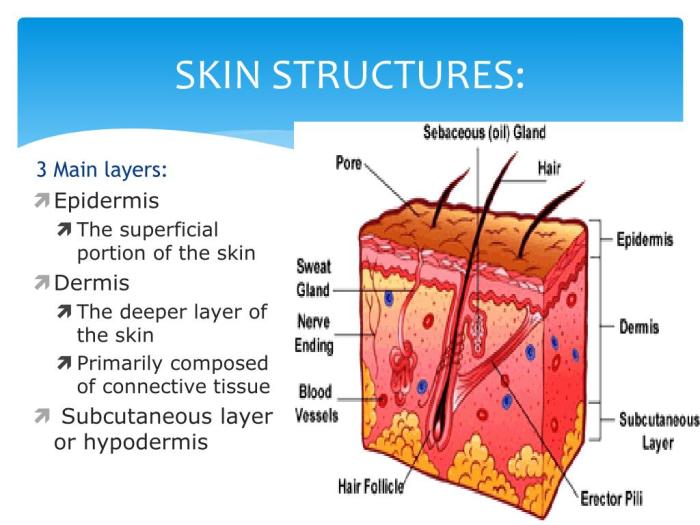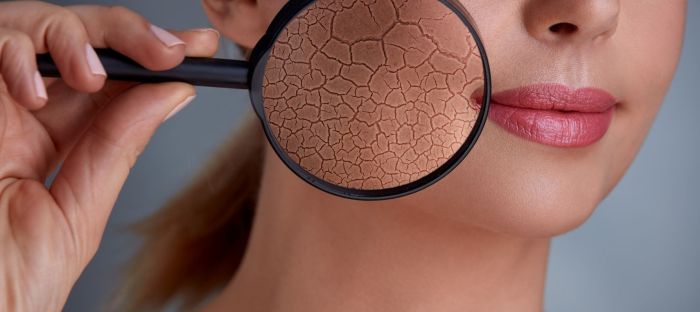Mohs surgery on nose is a specialized procedure used to treat skin cancers on the delicate nasal area. This in-depth guide explores every facet of the process, from the initial evaluation to long-term management. We’ll delve into the reasons for choosing Mohs surgery, the surgical technique, and the crucial post-operative care required for optimal outcomes. Understanding the intricate connection between facial aesthetics and function is key to comprehending the nuanced approach to this procedure.
The unique challenges presented by the nose’s prominence on the face, and its vital role in both appearance and breathing, necessitate meticulous attention to detail throughout the entire Mohs surgery process. This article provides a comprehensive overview of the pre-operative considerations, surgical procedure, post-operative care, aesthetic outcomes, and long-term management strategies.
Introduction to Mohs Surgery on the Nose
Mohs surgery is a specialized surgical technique used to treat skin cancers. It involves carefully removing layers of skin, examining them under a microscope, and then repeating the process until all cancerous cells are removed. This precise approach minimizes the risk of leaving behind any cancerous cells, reducing the chance of recurrence. The technique is particularly valuable for delicate areas like the nose, where preserving as much healthy tissue as possible is crucial.The nose plays a vital role in facial aesthetics and function.
It is a prominent feature, and any abnormality can significantly impact a person’s appearance and self-esteem. Preserving the natural shape and structure of the nose is paramount in Mohs surgery, as this delicate procedure aims to remove cancerous tissue while minimizing scarring and preserving its overall functionality.
Reasons for Performing Mohs Surgery on the Nose
Skin cancers, including basal cell carcinoma and squamous cell carcinoma, frequently develop on the nose due to its exposure to the sun. These cancers, if left untreated, can spread and potentially cause serious complications. Early detection and prompt treatment are essential. Mohs surgery is frequently employed on the nose to remove these cancerous lesions because it provides a high cure rate with minimal damage to surrounding healthy tissue.
It is particularly useful for skin cancers in hard-to-reach areas of the nose, as well as those with indistinct borders, which are more challenging to treat effectively using other methods.
Significance of the Nose in Facial Aesthetics and Function
The nose’s unique position on the face makes it a central element in facial harmony. Its shape and size contribute significantly to a person’s overall appearance. Functional aspects of the nose include breathing, smell, and sound resonance. Preserving the nose’s natural contours and functionality is critical during any surgical procedure, especially in Mohs surgery where the goal is to achieve a complete cure while minimizing visible scarring and preserving its aesthetic appeal.
Comparison of Mohs Surgery with Other Procedures
| Procedure Name | Description | Benefits | Risks |
|---|---|---|---|
| Mohs Surgery on the Nose | A specialized surgical technique that removes cancerous skin lesions layer by layer, with microscopic examination of each layer. This process is repeated until all cancerous cells are removed, minimizing the risk of recurrence and preserving healthy tissue. | High cure rate, minimal scarring, preservation of healthy tissue, precise removal of cancerous cells. | Potential for some discomfort or pain during and after the procedure, temporary swelling or bruising, risk of infection, and possible cosmetic outcome variations, though these are minimized by surgical expertise. |
Pre-Operative Considerations
Before embarking on Mohs surgery for a suspected skin cancer on the nose, a thorough evaluation of the patient is paramount. This meticulous process ensures the safety and efficacy of the procedure, maximizing the chances of complete removal and minimizing the risk of recurrence. A comprehensive understanding of the patient’s medical history, current condition, and the specific characteristics of the lesion is crucial.The pre-operative evaluation aims to precisely define the extent and nature of the skin cancer, enabling the surgeon to tailor the surgical approach for optimal results.
This meticulous approach is particularly vital for lesions located on a delicate area like the nose, where cosmetic outcomes are paramount.
Patient Evaluation Process
The patient evaluation process involves a multifaceted approach encompassing a detailed patient history, a comprehensive physical examination, and potentially various diagnostic tests. This multi-pronged approach allows the surgeon to gather a complete picture of the patient’s situation, aiding in the most appropriate treatment plan. It is not enough to just see the lesion; understanding the entire clinical context is essential.
Role of Diagnostic Tests
Diagnostic tests play a critical role in confirming the presence and extent of skin cancer. These tests aid in determining the precise margins of the lesion, which is vital for complete removal and prevention of recurrence. Histology, for instance, is frequently used to confirm the diagnosis and determine the type of skin cancer, guiding the surgical approach. Dermoscopy is a non-invasive technique that aids in assessing the characteristics of the lesion, providing crucial visual information for diagnosis.
Importance of Patient History and Physical Examination
The patient’s history, including any prior skin cancers, sun exposure habits, and family history of skin cancer, provides valuable context. A thorough physical examination allows the surgeon to visually assess the lesion’s size, shape, color, and location. For instance, a history of significant sun exposure might suggest a higher likelihood of squamous cell carcinoma. The physical examination provides the surgeon with a crucial first impression.
These two aspects are the bedrock of the initial assessment.
Common Skin Conditions Necessitating Mohs Surgery, Mohs surgery on nose
Several skin conditions can necessitate Mohs surgery on the nose, most commonly various forms of skin cancer. Basal cell carcinoma, squamous cell carcinoma, and melanoma are the primary concerns. Each presents unique characteristics and requires a tailored surgical approach. In addition, precancerous lesions like actinic keratoses can sometimes warrant Mohs surgery to prevent malignant transformation.
Table Comparing Diagnostic Methods
| Diagnostic Method | Description | Strengths | Limitations |
|---|---|---|---|
| Dermoscopy | Non-invasive technique using a dermatoscope to examine the lesion. | Provides detailed visualization, aids in early detection, and can be performed in the office setting. | Requires specialized training and may not always provide definitive diagnosis. |
| Biopsy | Removal of a small tissue sample for microscopic examination. | Provides a definitive diagnosis, enabling precise identification of the cancer type. | Can be invasive, may not always capture the entire lesion’s extent. |
| Histopathology | Microscopic examination of tissue samples. | Provides definitive diagnosis, enabling characterization of cancer type and grade. | Requires laboratory processing, may involve a delay in obtaining results. |
Surgical Procedure
The Mohs surgical procedure, a meticulous technique, is specifically tailored for skin cancers, particularly those located on delicate areas like the nose. This precision-driven approach minimizes damage to healthy tissue, preserving the natural structure and aesthetics of the nose. The goal is to remove all cancerous cells while preserving as much normal tissue as possible. This approach is crucial for patients, especially those with skin cancers on the face, as it ensures the best possible outcome in terms of both functional and cosmetic results.
Excision Technique
The Mohs technique for excision of skin cancers on the nose involves a precise and staged removal of tissue. The surgeon carefully removes a thin layer of skin containing the suspected cancerous cells, followed by microscopic examination. Based on the microscopic findings, the surgeon determines whether additional tissue removal is necessary. This iterative process continues until no cancerous cells are detected in the margins of the excised tissue.
This step-by-step approach ensures complete removal of the cancer while preserving healthy tissue.
Instruments and Tools
A variety of specialized instruments and tools are employed during Mohs surgery. These include scalpels, micro-knives, and specialized instruments for precise tissue dissection. Furthermore, precise instruments are employed for meticulous tissue handling. The selection and use of these instruments depend on the specific location and characteristics of the skin cancer. This meticulousness is vital for the overall success of the procedure.
Mohs surgery on the nose can be a delicate procedure, often requiring precise removal of skin cancer. While the focus is on healing and restoring the nose’s appearance, it’s also important to consider the potential impact on mental well-being. For example, some patients might find that certain antidepressants, like comparing Celexa vs Lexapro in terms of uses, efficacy, and safety, can help manage anxieties related to the surgery and recovery process.
celexa vs lexapro uses efficacy safety Ultimately, the goal is to get the nose back to its best possible shape, free from cancerous cells and supported by a holistic approach to mental health.
Meticulous Tissue Handling
Maintaining meticulous tissue handling is paramount during Mohs surgery on the nose. Careful handling of the tissue samples is crucial for accurate microscopic analysis. The surgeon must take great care to avoid contamination or damage to the specimen. This includes using sterile instruments, maintaining a clean surgical field, and preserving the tissue’s integrity. The precise handling of the tissue is directly related to the accuracy of the microscopic evaluation and, ultimately, the success of the procedure.
Mohs Procedure on the Nose – Step-by-Step
| Step | Description | Instruments Used | Microscopic Analysis |
|---|---|---|---|
| 1 | Initial excision of the suspected cancerous lesion. A small, carefully shaped margin of healthy skin is removed. | Scalpels, micro-knives, tissue forceps | The excised tissue is immediately prepared for microscopic analysis. Pathologists analyze the tissue under a microscope for the presence of cancer cells. |
| 2 | Microscopic analysis of the tissue. Pathologists identify the margins of the lesion. | Microscope, slides, staining solutions | Results are analyzed for cancer cell presence in the margin. |
| 3 | If cancer cells are present in the margin, additional tissue is removed in a precisely defined shape. | Scalpels, micro-knives, tissue forceps | The tissue is again prepared for microscopic analysis, and the process repeats. |
| 4 | This process repeats until no cancerous cells are found in the margin. The surgeon ensures that all cancerous cells are removed while minimizing the amount of healthy tissue removed. | Scalpels, micro-knives, tissue forceps | Final microscopic examination verifies the absence of cancerous cells in the margin. |
Post-Operative Care
Navigating the post-operative period after Mohs surgery on the nose requires careful attention to detail. This crucial phase focuses on promoting healing, managing potential complications, and ensuring the best possible outcome. Proper wound care and adherence to your dermatologist’s instructions are paramount for a smooth recovery.Post-operative care is designed to minimize complications, promote optimal healing, and reduce the risk of infection or scarring.
It’s essential to follow your dermatologist’s specific instructions closely, as individual needs may vary.
Wound Care Instructions
Proper wound care is essential for preventing infection and promoting healing. This involves meticulously cleaning the surgical site, applying dressings, and managing any discomfort. Your dermatologist will provide detailed instructions on how to clean and care for the wound. Failure to adhere to these instructions can delay healing and increase the risk of complications.
- Regularly clean the wound with a saline solution or prescribed antiseptic solution, as directed by your dermatologist. Avoid using harsh soaps or alcohol-based cleansers, which can irritate the wound.
- Apply prescribed dressings and change them according to the instructions provided by your dermatologist. The frequency of dressing changes will depend on the type of dressing used and the healing process.
- Report any signs of increased pain, swelling, redness, or drainage from the surgical site immediately to your dermatologist. These could indicate an infection or other complications.
Follow-up Appointments
Regular follow-up appointments are crucial for monitoring the healing process and addressing any concerns. Your dermatologist will assess the wound, evaluate its healing, and provide any necessary adjustments to your care plan. Missing appointments can jeopardize the healing process and increase the risk of complications.
Dealing with a skin concern on your nose? Mohs surgery is a precise technique used to treat skin cancers on the nose. It’s really important to support your body’s healing process. For example, some people find that supplementing with specific magnesium forms, like magnesium l threonate vs magnesium glycinate , can help. Regardless of the choices you make, remember that a healthy lifestyle and post-procedure care are key to a successful outcome for Mohs surgery on the nose.
- Schedule and attend all follow-up appointments as directed by your dermatologist. These appointments are essential for monitoring healing and identifying any potential problems early.
- Thoroughly document any changes in the wound, such as increased pain, swelling, or drainage. Reporting these changes during your appointments will help your dermatologist promptly address any concerns.
- Communicate openly with your dermatologist about any questions or concerns you have regarding your recovery. Addressing these concerns promptly can help avoid potential complications.
Potential Complications
While Mohs surgery is generally safe, potential complications can arise. These complications, although infrequent, can be managed effectively with prompt medical intervention.
- Infection: Signs of infection include increased pain, swelling, redness, warmth, and purulent drainage from the surgical site. Prompt treatment with antibiotics is often necessary.
- Bleeding: While uncommon, excessive bleeding can occur. This usually resolves with pressure or additional interventions.
- Scarring: Scarring is a possibility, but the extent and visibility can vary depending on the size and location of the surgical site. Minimizing scarring is a priority of Mohs surgery and post-operative care.
- Delayed healing: In some cases, the healing process may take longer than expected. This is usually related to the depth and size of the wound or other factors.
Healing Process
The healing process after Mohs surgery on the nose is gradual and typically takes several weeks. Initial swelling and bruising are common. The wound gradually closes and the skin regenerates. Complete healing can take several weeks to months, depending on the individual and the extent of the procedure.
- The initial stages involve swelling, bruising, and mild discomfort. These symptoms usually subside within a few days.
- The wound begins to close and the skin regenerates over the following weeks.
- The final healing phase involves the formation of a scar, which may vary in appearance and size.
Potential Post-Operative Complications and Management
| Potential Complications | Management |
|---|---|
| Infection | Prompt antibiotic treatment, close monitoring, and adherence to wound care instructions. |
| Bleeding | Applying pressure to the wound, possible need for cauterization or stitches. |
| Excessive Scarring | Addressing the issue during the initial healing phase, possible scar revision procedures if needed. |
| Delayed Healing | Regular follow-up appointments, and addressing underlying factors affecting healing. |
Aesthetic Outcomes
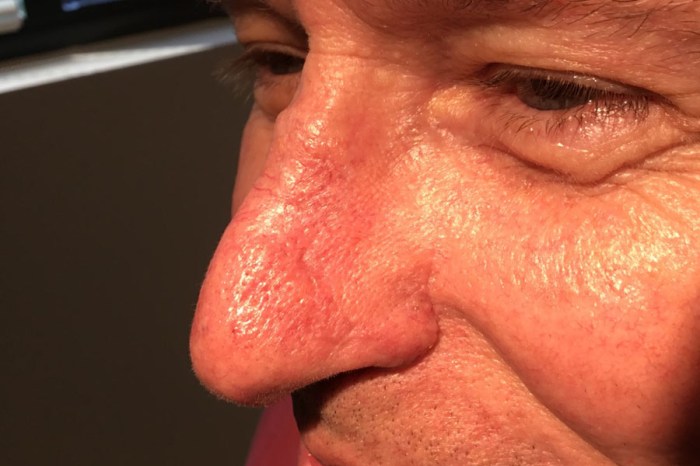
Mohs surgery, while crucial for precise cancer removal, demands meticulous attention to preserving the natural aesthetics of the treated area, especially on the delicate nose. Achieving a seamless, natural-looking result is paramount for patient satisfaction and psychological well-being. This section delves into the strategies employed to minimize scarring and maximize functional restoration, showcasing successful outcomes and highlighting the nuances of pre- and post-operative appearance.
Mohs surgery on the nose can be a delicate procedure, requiring precision and expertise. A highly regarded dermatologist, like Jurairat J Molina MD MBA , is often instrumental in achieving the best possible outcomes. This specialized approach, crucial for preserving healthy tissue around the nose, makes it a preferred option for skin cancers in that area.
Minimizing Scarring
Minimizing scarring is a cornerstone of Mohs surgery, particularly on the nose. Techniques employed to achieve this include meticulous surgical planning, precise excision, and careful closure techniques. The surgeon’s experience and skill play a vital role in achieving minimal scarring, as does the selection of the appropriate closure method. The use of advanced surgical techniques, such as undermining and skin grafting, significantly reduces the likelihood of noticeable scarring.
For example, a skilled surgeon may utilize a Z-plasty or other skin advancement techniques to reposition tissue and minimize the appearance of a linear scar.
Functional Restoration
Beyond aesthetic considerations, Mohs surgery on the nose must address potential functional impairments. This involves meticulous reconstruction of the nasal structure, ensuring that the repaired area seamlessly integrates with the surrounding tissue. The surgeon may utilize skin grafts, flaps, or other reconstructive techniques, meticulously matching the color, texture, and thickness of the surrounding nasal skin to ensure a natural appearance.
The surgeon’s expertise in reconstructive surgery is crucial in achieving a result that not only removes the cancerous tissue but also restores the nose’s natural form and function.
Successful Outcomes
A successful outcome in Mohs surgery on the nose is often characterized by subtle but significant improvements. For instance, a patient with a noticeable lesion on the tip of their nose might experience a nearly imperceptible difference in their nasal profile after the procedure, demonstrating the precise nature of the intervention. The goal is not merely to remove the cancerous lesion but to restore the nose’s original form and contour, leaving no visible trace of the surgical intervention.
Post-operative photographs often highlight the restoration of symmetry and proportion, a crucial element in aesthetic outcomes.
Comparison of Surgical Techniques
| Surgical Technique | Description | Advantages | Disadvantages |
|---|---|---|---|
| Skin Grafting | Transfer of skin from a donor site to the defect. | Can cover large defects, provides a durable result. | Potential for donor site morbidity, may require multiple procedures. |
| Local Flaps | Tissue repositioning from adjacent areas. | Preserves the natural contours of the nose, less donor site morbidity. | Suitable for smaller defects, technical skill required. |
| Z-Plasty | Reconstructive technique that repositions tissue to reduce scar tension. | Minimizes scar visibility, improves scar shape and length. | Requires careful planning and precise execution. |
| V-Y Advancement Flap | Reshaping tissue to reduce tension and create a more natural appearance. | Reduces scar tension, good for linear defects. | May not be suitable for all defect types, requires precise planning. |
The table above highlights the various surgical techniques employed in Mohs surgery on the nose, demonstrating the wide range of options available to restore both the function and aesthetic appeal of the nasal structure.
Long-Term Management
Mohs surgery offers a high success rate in treating skin cancers, particularly on the nose, but long-term vigilance is crucial. This phase extends beyond the initial procedure, focusing on preventing recurrence and managing any potential skin concerns that might arise. Proactive follow-up and a clear understanding of potential issues are essential for long-term well-being and aesthetic satisfaction.
Importance of Long-Term Follow-Up
Regular follow-up appointments are vital for monitoring the treated area and detecting any signs of recurrence early. Early detection allows for prompt intervention, minimizing the impact of potential complications. This proactive approach ensures optimal long-term outcomes and preserves the aesthetic integrity of the nose.
Role of Regular Skin Examinations
Dermatologists employ visual inspections and, when necessary, biopsies to assess the treated area for any suspicious changes. These examinations are tailored to the individual patient’s needs and risk factors, ensuring that any developing abnormalities are identified quickly. Early intervention is crucial to prevent further growth or spread of cancerous cells.
Strategies for Managing Potential Skin Concerns
Skin reactions, such as redness, swelling, or scarring, can occur post-Mohs surgery. Managing these concerns involves meticulous post-operative care and appropriate medical intervention, as directed by the dermatologist. These strategies can help alleviate discomfort and promote healing. For instance, using prescribed topical medications and keeping the area clean and protected are crucial. A dermatologist can provide personalized recommendations based on the individual’s specific situation.
Questions Patients Should Ask Their Dermatologist
Patients should actively engage in discussions with their dermatologist regarding long-term care. This involves seeking clarification on specific post-operative instructions, recognizing potential complications, and understanding preventative measures. Key questions should include:
- What are the signs of recurrence that I should be aware of?
- How often should I schedule follow-up appointments?
- What are the potential long-term skin concerns, and how can they be managed?
- What skin care regimen should I follow to promote healing and prevent further irritation?
- Are there any specific lifestyle factors that could influence the healing process?
These questions are crucial for ensuring a smooth and successful recovery. Open communication and collaboration with the dermatologist are essential to achieve the best possible long-term outcome.
Case Studies: Mohs Surgery On Nose
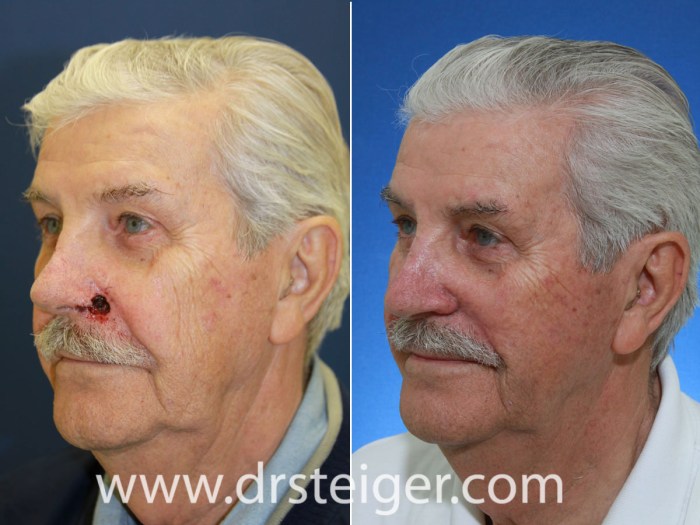
Mohs micrographic surgery, a specialized technique for skin cancer removal, offers a high cure rate and minimizes tissue loss, particularly crucial in delicate areas like the nose. Detailed case studies illuminate the nuances of this procedure, demonstrating the importance of personalized treatment plans tailored to each patient’s unique situation. These examples showcase the complexities of skin cancer, the precision of Mohs surgery, and the ultimate goal of restoring both function and aesthetics.Understanding the diverse presentation of skin cancers on the nose and the subsequent surgical approach is critical.
Each case study below highlights a different aspect of Mohs surgery, including challenges, considerations, and long-term outcomes, emphasizing the importance of meticulous surgical planning and post-operative care.
Case Study 1: Basal Cell Carcinoma with Recurrent Nodule
This patient presented with a persistent, recurrent basal cell carcinoma (BCC) nodule on the nasal dorsum. Initial examination revealed a small, firm, pearly papule with telangiectasia. Microscopic examination confirmed the diagnosis of BCC.  The Mohs procedure involved meticulous removal of the tumor in stages, with microscopic examination of each layer. The surgical approach focused on precise excision of the tumor and its surrounding margins to ensure complete removal. The surgical procedure was performed under local anesthesia.
The Mohs procedure involved meticulous removal of the tumor in stages, with microscopic examination of each layer. The surgical approach focused on precise excision of the tumor and its surrounding margins to ensure complete removal. The surgical procedure was performed under local anesthesia. Post-operative healing was uneventful. The patient experienced minimal scarring. Long-term follow-up revealed no recurrence of the BCC.
Post-operative healing was uneventful. The patient experienced minimal scarring. Long-term follow-up revealed no recurrence of the BCC. The challenge in this case was the recurrent nature of the tumor. The careful attention to precise margin assessment during the Mohs procedure was essential for complete tumor removal.
The challenge in this case was the recurrent nature of the tumor. The careful attention to precise margin assessment during the Mohs procedure was essential for complete tumor removal.
Case Study 2: Squamous Cell Carcinoma with Extensive Involvement
A patient presented with a large, ulcerated squamous cell carcinoma (SCC) on the right nasal ala. The lesion exhibited significant tissue destruction and undermining. The patient’s history included a history of sun exposure.  The Mohs procedure was extensive, involving multiple stages of excision and microscopic analysis. The surgical approach focused on complete tumor removal while preserving as much healthy tissue as possible.
The Mohs procedure was extensive, involving multiple stages of excision and microscopic analysis. The surgical approach focused on complete tumor removal while preserving as much healthy tissue as possible. Post-operative care included meticulous wound care and skin grafting to close the defect. The patient experienced some temporary discomfort. The long-term outcome demonstrated complete eradication of the SCC without recurrence.
Post-operative care included meticulous wound care and skin grafting to close the defect. The patient experienced some temporary discomfort. The long-term outcome demonstrated complete eradication of the SCC without recurrence. The challenges in this case included the large size and depth of the lesion, as well as the need for reconstructive procedures.
The challenges in this case included the large size and depth of the lesion, as well as the need for reconstructive procedures.
Case Study Summary
| Case Study | Patient Demographics | Type of Cancer | Treatment Outcome |
|---|---|---|---|
| 1 | (Age, Gender, Ethnicity) | BCC, Recurrent | Complete eradication, no recurrence |
| 2 | (Age, Gender, Ethnicity) | SCC, Extensive | Complete eradication, no recurrence |
Epilogue
In conclusion, Mohs surgery on the nose offers a targeted approach to treating skin cancer while minimizing the impact on facial aesthetics and function. The detailed procedures and post-operative care, along with long-term follow-up, are vital for successful outcomes. This comprehensive guide aims to empower patients and their healthcare providers with the knowledge needed to navigate this intricate procedure.
